California State PTA sent the following letter on July 29, 2020 to Nancy Pelosi, Speaker of the House of Representatives, House of Representatives Minority Leader Kevin McCarthy, Senate Majority Leader Mitch McConnell, and Senate Minority Leader Charles Schumer:
Dear Speaker Pelosi, Minority Leader McCarthy, Majority Leader McConnell, and Minority Leader Schumer:
On behalf of our 700,000 members, California State PTA is writing to express our deep disappointment that the proposed HEALS Act does not respond adequately to the funding needs of our schools and the health and safety needs of our students and school staff.
The Senate HEALS ACT provides little healing and in fact tries to force schools to open with in-person learning despite the worsening of the coronavirus pandemic throughout the country.
Instead of protecting public education by funding at the levels school experts recommend, the HEALS Act shortchanges kids and teachers. The Council of Great City Schools estimates that schools need at least $200 billion to meet the needs of students The HEALS Act provides far less: $70 billion is allocated to the country’s K-12 schools BUT only one-third, or about $23.3 billion, will be available immediately.
The bill tries to persuade schools to reopen in person by dangling about two-thirds of the funding ($46.6 billion) — only to schools that reopen with more than 50% in-person instruction.
Schools that are reopening mostly with distance learning will not be eligible for any additional funding outside the initial $23.3 billion.
This punishes states that are opening primarily with distance learning and prioritizing the health and well-being of students and staff. California, the state with the most students in the nation, will not get enough money to support its schools because it is putting safety and health first.
The timeline for the reopening of schools should be based on the current impact of the virus on individual communities. Using the promise of extra money to re-open schools in person violates our responsibility to protect the safety and health of our children.
California State PTA has several additional concerns beyond the low level of funding for schools to open safely.
- Oppose Private School Tuition Scholarships The bill provides money for private school tuition scholarships. Public money should be used for public schools. Private school voucher programs undermine our nation’s public schools by diverting desperately needed resources away from the public-school system to fund the education of a few, select students in private, often religious, schools.
- Increase Funding for Childcare The HEALS Act would allocate $15 billion to help childcare providers reopen, including $190 million for programs aimed at preventing family violence and promoting child welfare. Childcare experts estimate that $50 billion is needed to provide for personnel, sanitation, training and other costs associated with reopening and running childcare facilities. Childcare is one of the most critical needs to allow parents to get back to work.
- Fund Special Education Missing from the bill is what most school districts put as one of their highest needs: fully funding special education. The costs of special education have grown much faster than revenues and schools are forced to reduce services for other students to meet their legal obligations.
- Support Internet Connectivity It is unacceptable that Congress is not providing needed resources to connect students and teachers to the internet as schools have already announced plans to conduct remote learning or a hybrid combination to start the school year. This is an equity issue that prevents students living in poverty from accessing public education.
Congress must invest at least $175 billion for K-12 education to ensure that students can keep learning and schools can reopen for in-person instruction when it is safe to do so.
Sincerely,
![]()
Celia Jaffe
President California State PTA
president@capta.org
cc: Senator Diane Feinstein
Senator Kamala Harris
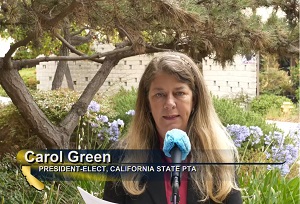 On June 16, 2020, California State PTA President-Elect Carol Green testified on behalf of PTA during the State Assembly’s hearing titled “Re-Opening California’s Public Schools for the 2020-21 School Year.”
On June 16, 2020, California State PTA President-Elect Carol Green testified on behalf of PTA during the State Assembly’s hearing titled “Re-Opening California’s Public Schools for the 2020-21 School Year.”
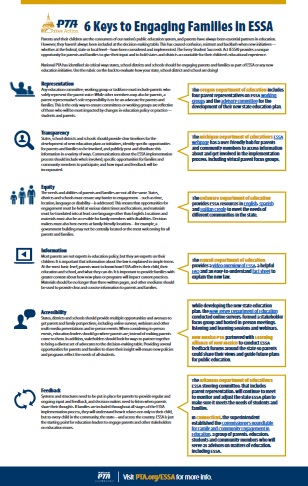 Parents and their children are the consumers of our nation’s public education system, and parents have always been essential partners in education. However, they haven’t always been included at the decision-making table. This has caused confusion, mistrust and backlash when new initiatives — whether at the federal, state or local level—have been considered and implemented.
Parents and their children are the consumers of our nation’s public education system, and parents have always been essential partners in education. However, they haven’t always been included at the decision-making table. This has caused confusion, mistrust and backlash when new initiatives — whether at the federal, state or local level—have been considered and implemented.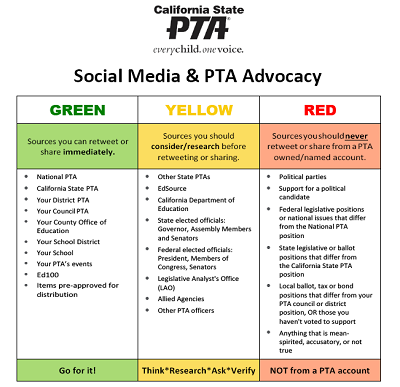
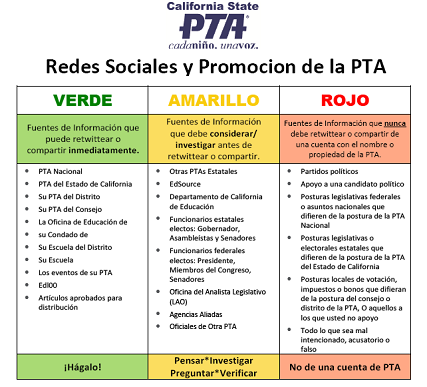
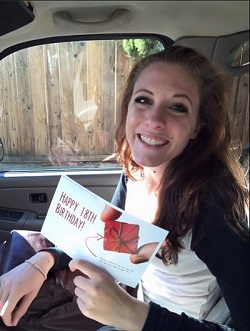 Advocacy is what makes PTA unique. As leaders, your work and contributions are an important part of PTA’s legacy of advocacy that has held strong for more than a century.
Advocacy is what makes PTA unique. As leaders, your work and contributions are an important part of PTA’s legacy of advocacy that has held strong for more than a century.